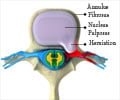- Spinal fractures - (http://www.mayfieldclinic.com/pe-spinefract.htm#.vb-hffmsx5e)
- Compression fractures of the back - (http://www.nlm.nih.gov/medlineplus/ency/article/000443.htm)
About
The human spine is made up of bones known as vertebrae. These vertebrae are anatomically divided into various regions as cervical (neck region), thoracic (midback), lumbar (lower back), sacral and coccygeal (pelvic region). Most of the fractures that occur due to major car accidents or fall from height affect the thoracic and the lumbar region. Spinal fracture mainly indicates an injury to the vertebrae, but may also affect the nerves, spinal cord, or the ligaments in the spinal column..
Spinal injuries that result in spinal fractures cause lot of discomfort, pain, difficulty in walking, or even paralysis in severe cases. Although pain relieving medications can help, injuries such as cervical spine fracture may warrant surgery.
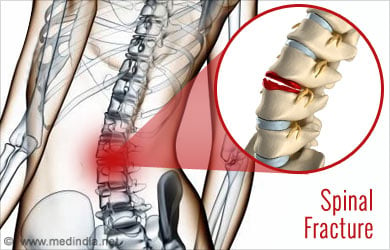
Causes of Spinal Fracture
A spinal fracture may be caused due to following conditions:
- A high-energy trauma: This includes a violent accident that puts extreme pressure on the spine. For example, car crash, fall from height, accident during playing sports, or gunshot wound
- Osteoporosis: This is a condition in which the bones become weak and fragile due to decrease in mineral content. Osteoporosis is thought to be the most common cause of spinal fracture
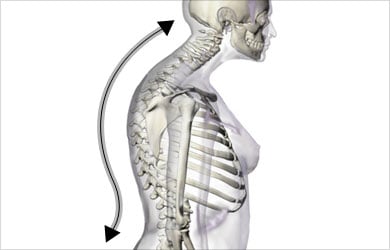
- Tumors in the body that spread to the bones of spine
- Tumors that start in the spine
Symptoms and Signs of Spinal Fracture
The symptoms of spinal fracture vary based on the location and severity of the injury. A moderate-to-severe back pain signals spinal injuries. In addition, spinal fractures also cause muscle spasm, weakness, loss of control of the bowel or bladder, and paralysis if the spinal cord is affected. Spinal compression fracture that occurs due to osteoporosis may not show symptoms initially. However, over time symptoms such as severe back pain, loss of height or hump-like curvature of the spine may be observed.
Diagnosis of Spinal Fracture
Spinal injuries need a careful diagnosis in order to initiate the appropriate treatment. People with fractured spine may have to undergo several tests and examinations as described below.
Physical Examination
During physical examination, a doctor examines vital signs such as breathing, heart rate and consciousness. The doctor may also check for signs of tenderness over affected area or signs of kyphosis (hump-like curvature) that occur due to osteoporosis.
X-ray
An x-ray test can identify the fractured vertebrae.
Computed Tomography (CT) Scan
A CT scan uses an X-ray beam and a computer to generate a two-dimensional image of the spine. This test can determine the changes or fracture in the bones of spine.
Magnetic Resonance Imaging (MRI) Scan
MRI scan uses a magnetic field and radiofrequency waves to generate a detailed view of the spine. MRI scan can investigate an injury to spinal cord or the ligaments. This test can diagnose a spinal fracture caused by a tumor.
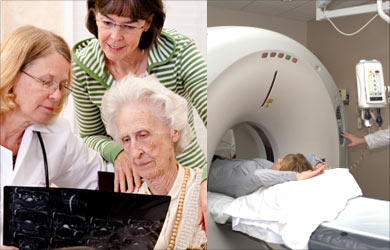
What are the Treatment Options for Spinal Fractures?
The main goals of treatment plan include reduction of pain, improving mobility, and managing osteoporosis. For better understanding, the treatment plans can be divided as medical and surgical.
Medical Treatment
The medical treatment focuses on pain management using medications such as non-steroidal anti-inflammatory drugs or opiates in severe cases, and bed rest. The spinal fractures that occur only through the vertebral body can be managed by using physical support such as braces or corsets for about 8 to 12 weeks. The braces restrict the movement of spine thereby reducing pain and improving healing process. The corsets are not recommended beyond 12 weeks as they may immobilize the spine and cause further bone loss.
Other physical treatment such as Transcutaneous Electrical Nerve Stimulation (TENS) may be used to improve movement and strength of the muscles around the spine. The underlying osteoporosis if present should also be treated.
Surgical Treatment
Surgery is required in cases of severe fractures or when pain lasts for more than two months.
Surgeries performed to fix the fractured spine include:
Vertebroplasty and Kyphoplasty
These procedures are performed to treat spinal compression fractures mainly caused by osteoporosis and spinal tumors. Both the procedures involve injecting cement into the broken spine bone so that it does not collapse again. Kyphoplasty additionally involves insertion of a balloon initially, which is inflated to restore the height of the vertebrae. Both the procedures are generally safe, however some complications such as infection, bleeding or leakage of the cement into surrounding area may be observed.
Both the procedures are considered to be minimally invasive and may cost up to INR 75,000 each.
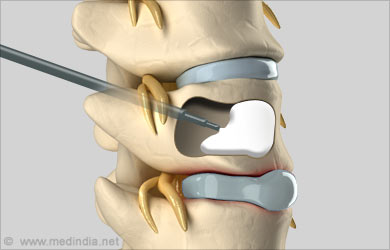
Spinal Fusion
Spinal fusion permanently joins two vertebrae with the help of a bone graft. The bone graft may be obtained either from another part of your body (autograft) or from a bone bank (allograft). The vertebrae may also be joined together with the help of rods, screws, plates, or cages.
The complications associated with spinal fusion procedure include infection, damage to the spinal nerve, and damage to the surrounding vertebrae. These procedures are relative expensive amounting approximately INR 3, 60,000.
Prevention of Spinal Fractures
- Get treatment for osteoporosis
- Indulge in physical activities such as swimming and walking that can provide joint motion without stress
- Avoid sudden twists or putting too much pressure on the spine
- Practice good techniques for standing, sitting, lifting, and other regular activities



